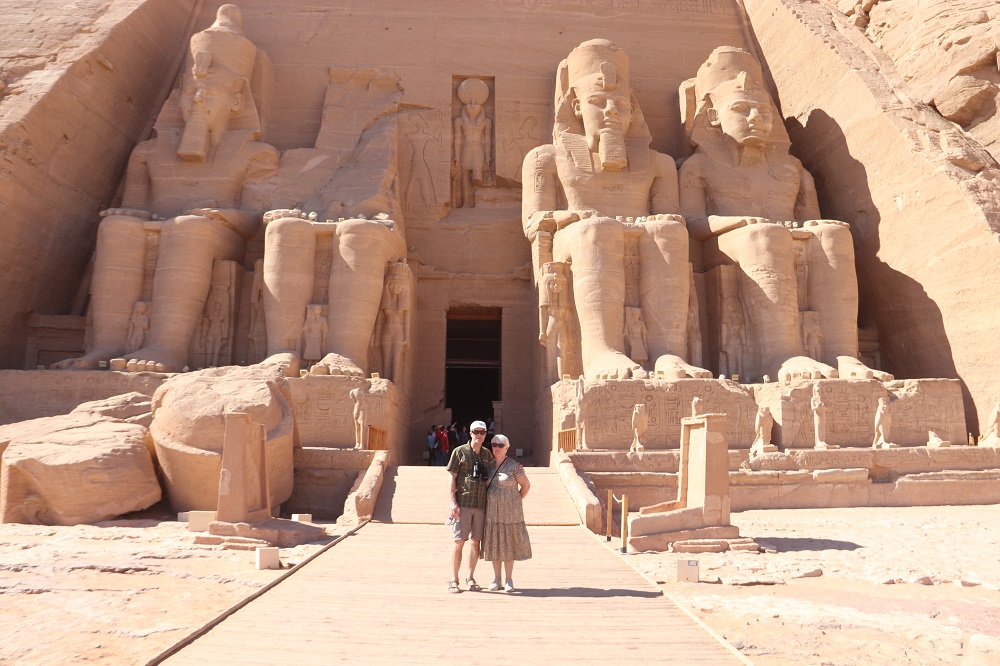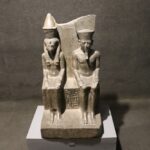Introduction: Ramses II, also known as Ramses the Great, was the third pharaoh of Egypt’s 19th Dynasty, ruling from 1279 to 1213 BCE. He is often regarded as one of Egypt’s most powerful and influential pharaohs.
Early life and ascension: Ramses II was born to Pharaoh Seti I and Queen Tuya. He ascended the throne in his early twenties, embarking on a reign that would last 67 years, one of the longest in ancient Egyptian history.
Military Achievements:
The Battle of Kadesh, fought in 1274 BC, was a significant military campaign led by Egyptian Pharaoh Ramses II. It took place near the city of Kadesh in present-day Syria, pitting Ramesses II’s forces against the Hittite Empire. The battle is renowned for being one of the largest chariot battles in ancient history and is considered a pivotal moment in the ancient Near East.
Despite initial setbacks, Ramesses II managed to rally his troops and ultimately claim victory in the battle. However, the conflict ended in a stalemate, and both sides suffered heavy casualties. Following the battle, Ramesses II and the Hittite king, Hattusili III, engaged in diplomatic negotiations and ultimately established the earliest recorded peace treaty, known as the Treaty of Kadesh. This treaty marked the first known example of a written agreement between two major powers, and it brought an end to hostilities between Egypt and the Hittite Empire.
The Battle of Kadesh and the subsequent peace treaty are significant not only for their historical importance but also for their impact on international relations in the ancient world. The treaty set a precedent for diplomatic negotiations and laid the foundation for future diplomatic agreements between ancient empires. Additionally, the battle and its aftermath solidified Ramesses II’s reputation as a skilled military leader and a shrewd diplomat. Overall, the Battle of Kadesh and the Treaty of Kadesh are enduring symbols of the complexities of ancient warfare and the potential for diplomacy to bring about lasting peace.
- Military Expeditions: Ramses II led numerous military expeditions into the Levant, Nubia, and Libya, solidifying Egypt’s power and influence.
Architectural Contributions:

- Abu Simbel Temples: Ramses II commissioned the construction of the Abu Simbel temples, carved out of rock and featuring colossal statues of himself.
- Ramesseum: His mortuary temple on the west bank of Thebes, known as the Ramesseum, stands as a testament to his architectural legacy.
- Pi-Ramesses: He built a new capital city, Pi-Ramesses, in the Nile Delta, showcasing his commitment to urban development.
Religious and Cultural Impact: Ramses II was a prolific builder, commissioning numerous statues, temples, and monuments. He promoted the worship of the gods, especially Amun, and depicted himself as a divine ruler, enhancing his status and legacy.
Family and Succession: Ramses II had over 100 children with his many wives, including his chief queen, Nefertari. His numerous progenies ensured the stable succession and continuity of his lineage.
Death and Legacy: Ramses II died at the age of 90 and was buried in the Valley of the Kings. His mummy was later moved to a royal cache for protection. His reign is often considered the pinnacle of Egypt’s imperial power, leaving a lasting legacy through his monumental construction and diplomatic achievements.
Conclusion: Ramses II’s reign exemplifies the zenith of ancient Egyptian civilization, marked by military prowess, architectural grandeur, and cultural richness. His contributions continue to fascinate historians and archaeologists, highlighting his enduring impact on history.



